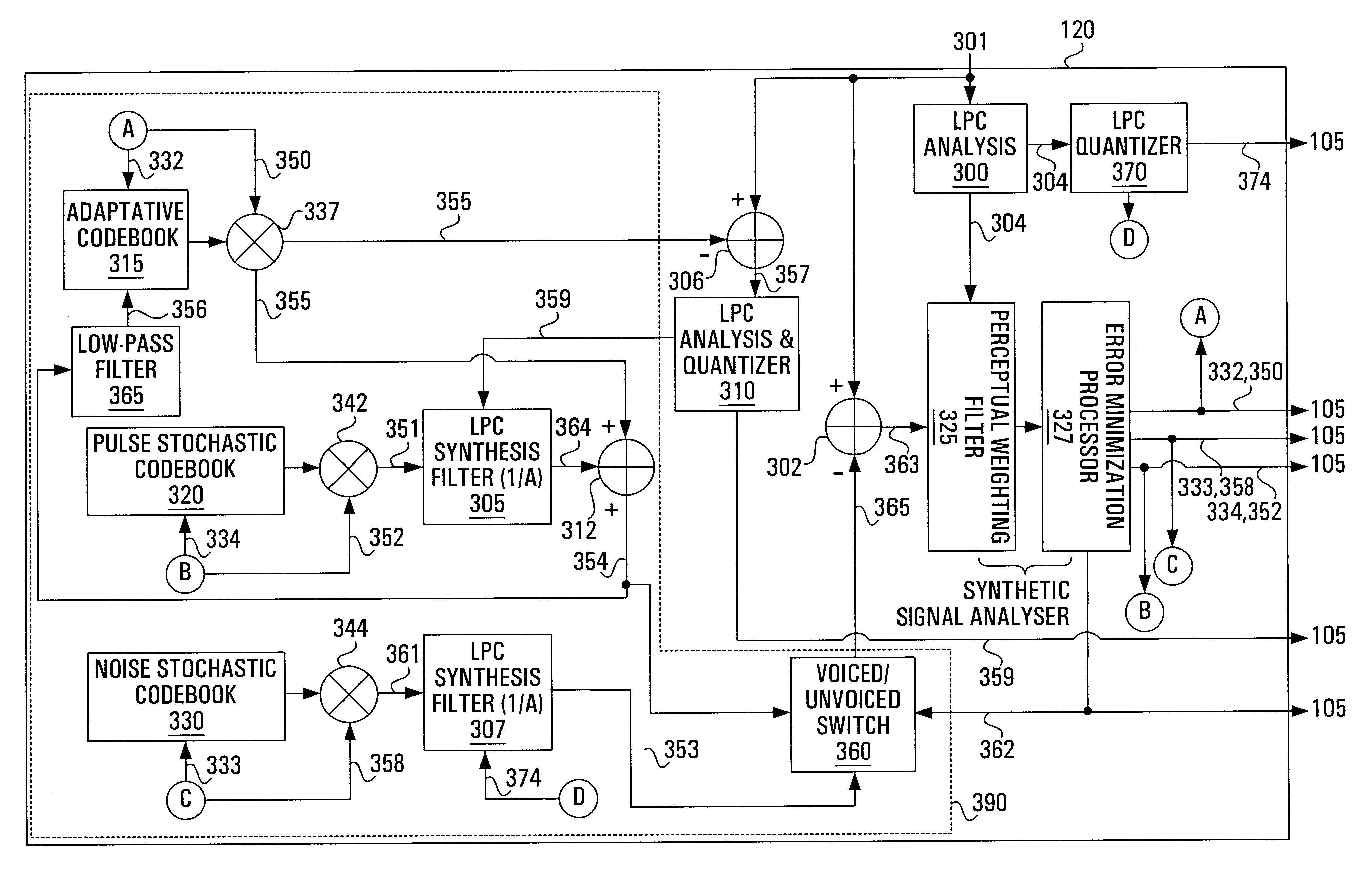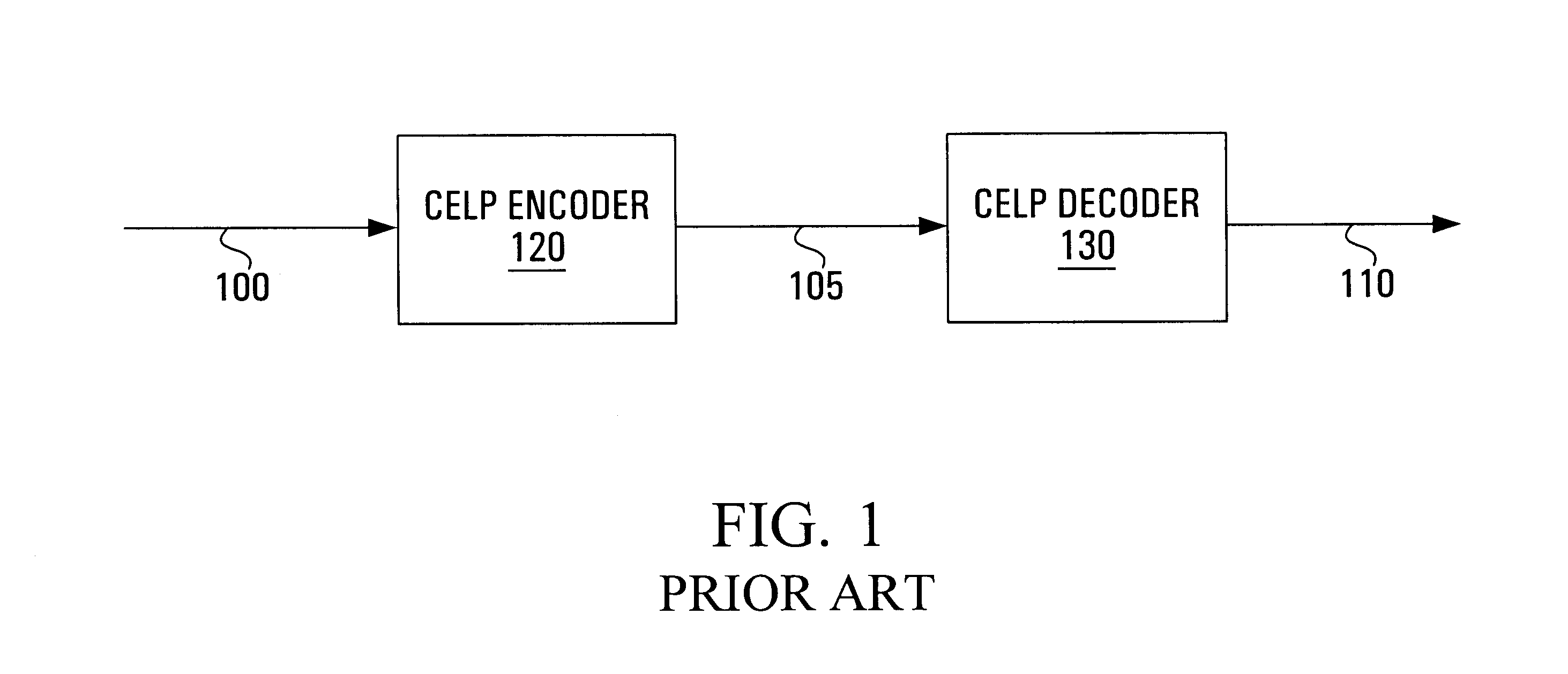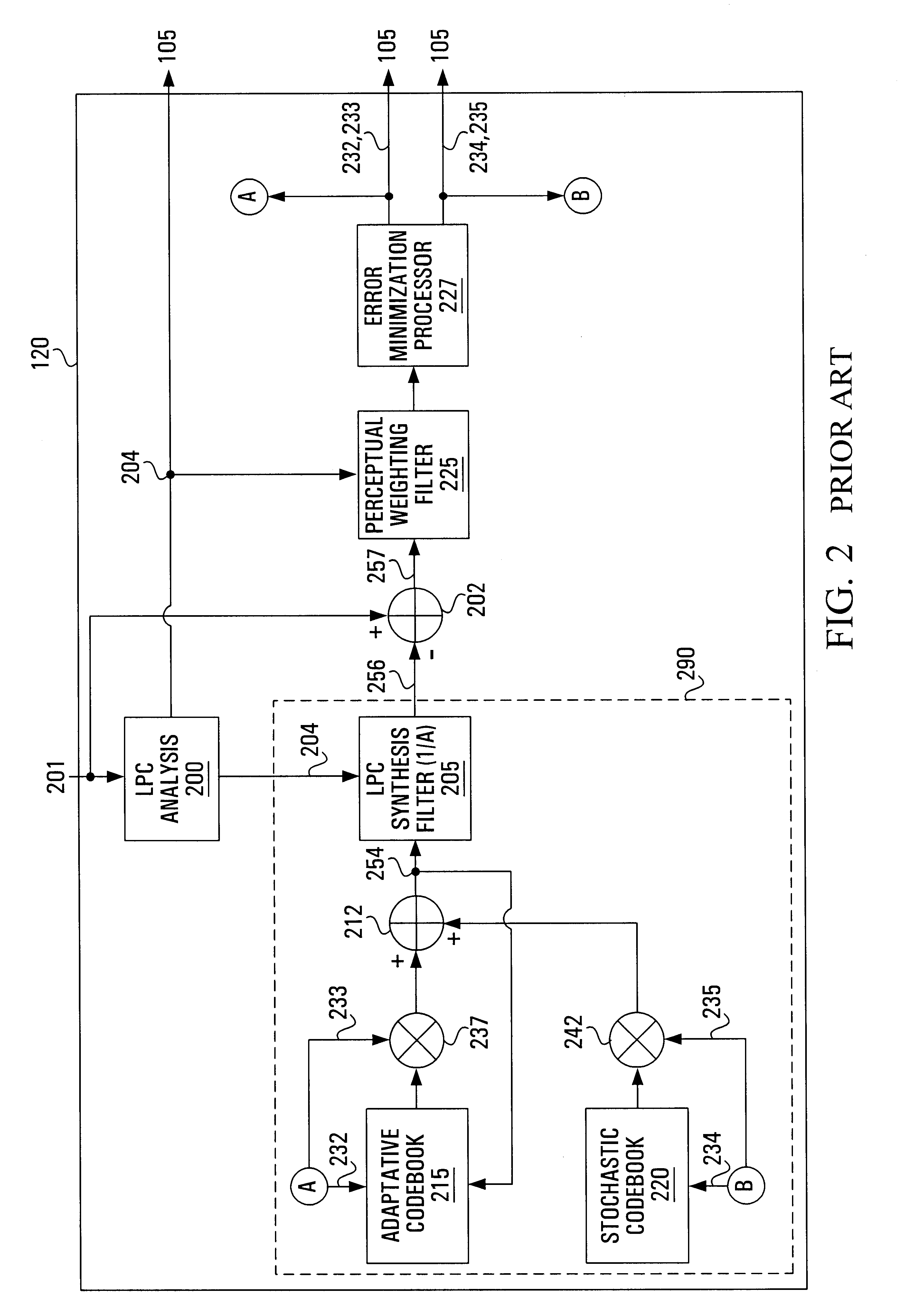Apparatus and method for coding speech signals by making use of voice/unvoiced characteristics of the speech signals
a speech signal and voice characteristic technology, applied in the field of improved audio signal coding devices, can solve the problems that the voice quality of those with lower bit rate may not be acceptable for telephony applications, and achieve the effect of better predicting the pitch characteristics of the audio signal
- Summary
- Abstract
- Description
- Claims
- Application Information
AI Technical Summary
Benefits of technology
Problems solved by technology
Method used
Image
Examples
Embodiment Construction
A prior art speech encoder / decoder combination is depicted in FIG. 1. A PCM (Pulse Coded Modulation) speech signal 100 is input to a CELP (Code Excited Linear Prediction) encoder 120 that processes the audio signal provided and produces a representation of the signal in a compressed form. A single sub-frame of this signal in encoded form is represented by a set of parameters comprising filter coefficients and an excitation segment. The signal sub-frame is transported over a communication channel 105, which carries it to a CELP decoder 130. The signal sub-frame is processed by the decoder 130 that uses the filter coefficients and the excitation segment to synthesize the audio signal.
CELP encoders are the most common type of encoders used in telephony presently. CELP encoders send index information that points to a set of vectors in adaptive and stochastic codebooks. That is, for each speech signal sub-frame, the encoder searches through its codebook(s) for the one that gives the best...
PUM
 Login to View More
Login to View More Abstract
Description
Claims
Application Information
 Login to View More
Login to View More - R&D
- Intellectual Property
- Life Sciences
- Materials
- Tech Scout
- Unparalleled Data Quality
- Higher Quality Content
- 60% Fewer Hallucinations
Browse by: Latest US Patents, China's latest patents, Technical Efficacy Thesaurus, Application Domain, Technology Topic, Popular Technical Reports.
© 2025 PatSnap. All rights reserved.Legal|Privacy policy|Modern Slavery Act Transparency Statement|Sitemap|About US| Contact US: help@patsnap.com



